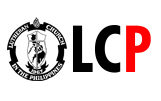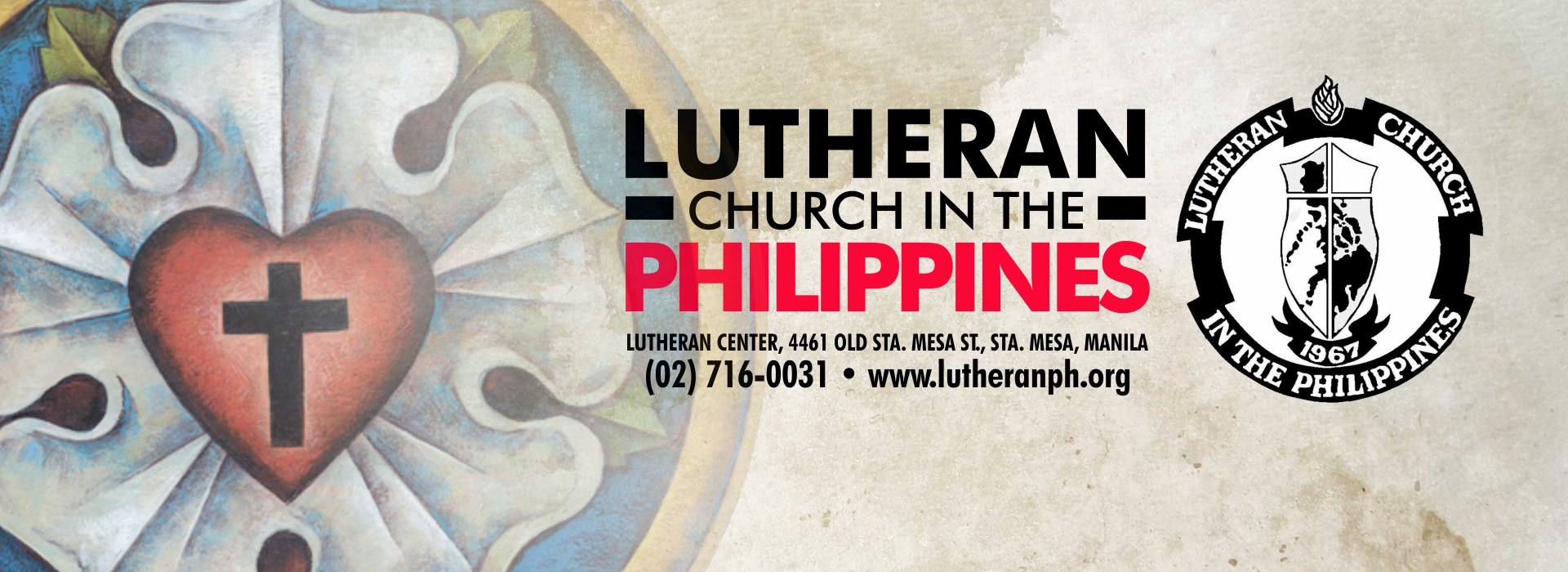The Republic of the Philippines and the Lutheran Philippine Mission share a common birthday. In July 1946, the Philippines became a Republic. That same year the first Lutheran missionaries from the Lutheran Church – Missouri Synod arrived in the country.
Lutheran work in the Philippines officially began on July 6, 1946, through a Filipino who in 1927 went to the United States to work but returned to his homeland as a missionary of the Lutheran Church – Missouri Synod. Rev. Dr. Alvaro A. Cariño and the Lutheran missionaries who followed him, had come with a strong desire to share the message of God’s grace with his own people because of the need to strengthen the witness of the Gospel of Jesus Christ even here in the “only Christian nation in the Far East.”
The mission work was supposed to begin earlier in 1940 with Rev. Cariño together with Rev. O. H. Schmidt, Executive Secretary of the Board of Foreign Missions of LC-MS set out on an exploratory trip and survey to the Philippines. Tensions in the region that resulted to World War II forced postponement until 1946. But shortly after the liberation of Manila in 1945, General Douglas McArthur authorized the establishment of a Lutheran Service Center in Manila to primarily serve American service personnel. Several Lutheran chaplains with the U.S. Armed Forces were temporarily in charge of the Center, located in a building on Rizal Avenue. Late in November, 1945, the Rev. Theodore R. Martens arrived in Manila to take over as Service Center pastor. Rev. Martens was also able to begin instruction classes with a number of Filipinos. He, together with more than a dozen Lutheran chaplains, helped lay the ground-work for Lutheran mission work in the Philippines.
A few days after the Philippines received its independence from the United States of America, Rev. Cariño arrived and immediately assisted Rev. Martens at the Lutheran Service Center and also followed up contacts he himself had made during his 1940 survey. Thus, on December 31, 1946, by God’s grace and providence, the first Lutheran congregation, Bethel Lutheran Church in Tondo, Manila was established. From this point forward, many other Lutheran missionaries arrived from LC-MS. This group of missionaries were eventually organized in 1947 as the “Lutheran Philippine Mission (LPM)” and began planning and implementing a strategy for serving the Metro Manila area and expanding to new areas.
In 1948, mission work expanded to the North Luzon area having the first congregation established in Binalonan, Pangasinan by another Filipino missionary, Rev. Henry Aradanas and American missionary, Rev. Norbert Becker. In 1949, mission work started in the Cordillera mountains of Luzon and also in Cagayan de Oro City in Mindanao island, southern Philippines.
During the 1950’s up to 1960’s, a slow and steady growth occurred in the mission work. There were more congregations established especially in the mountains of Cordillera. The Lutheran Philippine Mission during that time recognized the need of training and equipping of dedicated men for the ordained ministry and leadership of the church along with its growing membership. Therefore, on June 30, 1955, the Lutheran Theological Seminary (LTS) was formally inaugurated in Cubao, Quezon City. The LTS was later moved to its present location in Baguio City in 1961 and became the “Lutheran Theological Seminary and Training Center.”
The first Annual Conference of the Lutheran Philippine Mission happened in 1956 where sixteen LC-MS missionaries, two Filipino pastors and eleven lay delegates formally organized the “Philippine Lutheran Church” which was composed of three districts: North Luzon District (NLD), South Luzon District (SLD), and Mindanao District (MDD). A Board of Control was also established and given the responsibility for the theological and Christian education programs of the church.
The task of proclaiming the Gospel to the uninformed, uncommitted, and unconcerned dominates all activity of the PLC. The burden of this task is borne by the congregations whose members, by word and deed; proclaim salvation through God’s grace in Jesus Christ. As their witness bears fruit, congregations grow and multiply and new opportunities to witness to God’s love appear.
To amplify the Gospel message, the Lutheran Church makes extensive use of mass communications. Even before the first missionaries arrived, the international radio ministry of the Lutheran Hour, “Bringing Christ to the Nations,” was broadcast in the Philippines. The coming of the transistor radio and television has widened the opportunities to present the Gospel message to those who otherwise might not hear it. To take advantage of this opportunity, the Lutheran Church established a Department of Mass Communications in 1961. The department coordinates the use of mass media and intensifies radio efforts. It supervises Bible correspondence courses for those who wish to study the Word of God in their homes. It also supervises the activities of the Lutheran Church Literature Center which produces a variety of Christian materials in seven major dialects.
The success of evangelistic efforts leads to the need for a strong program of parish education designed to equip God’s people for His service. Hundreds of classes are conducted each week by pastors, missionaries, and trained laymen to help Filipino Lutherans gain a thorough knowledge of Bible truths and to apply these truths to everyday life situations. To emphasize the importance of this task and its relationship to evangelism, the PLC also established a Department of Parish Education in 1961. The department coordinates the work of providing materials needed by the congregation – including hymnals, catechisms, Sunday school lessons, Vacation Bible School, and Bible class materials. The department also conducts week-long institutes each year to train the laity in special areas of church service.
The January 1963 General Convention proved to be the last for the Philippine Lutheran Church as the name was changed to the “Lutheran Church in the Philippines (LCP).” A Constitution and By-Laws was proposed and finally adopted at the October 1966 General Convention along with its becoming a legal corporation, duly registered in the Securities and Exchange Commission (SEC), and operating under the laws of the Republic of the Philippines.
On April 12, 1964, a permanent LCP headquarters was dedicated at 4461 Old Sta. Mesa St., Sampaloc (Sta. Mesa), Manila. This was the residential site of former Philippine President Sergio Osmeña and headquarters of the Japanese forces during World War II.
In its constitution adopted on October 1966, the Lutheran Church in the Philippines spelled out its tasks: “to bring salvation to the people through Jesus Christ; to train and educate dedicated Christians to Christ’s service; to challenge new born Christian witness and share God’s love to others; to plant church in strategic areas of the Philippines; to encourage the local church participate in missions in other parts of the world; to unite Christian churches in a true understanding of and witness to the Gospel of Jesus Christ.” To achieve these tasks the church is actively involved in evangelism, radio, television, the production of Christian literature, and literacy programs. The church carries out a campus ministry to Manila’s college students and a program of seminary education. Missionaries are involved in agricultural work. Through the Philippine Lutheran Medical Mission, the sick and suffering are brought to Christ for healing and for the gift of eternal life. In all of its activities, the Lutheran Church seeks to strengthen the Philippine nation by strengthening its people through the Gospel of Jesus Christ.
In the 1968 8th General Convention, Rev. Dr. Alvaro A. Cariño, the first Lutheran missionary to the Philippines, was elected President of LCP, making him the first Filipino president of the Lutheran Church in the Philippines. The convention also approved the application for membership in the National Council of Churches in the Philippines and was accepted by the end of 1969.
After a series of theological dialogues, on January 9, 1969, a joint committee with representatives from the Roman Catholic Church in the Philippines (RCCP) and the Lutheran Church in the Philippines (LCP), adopted a “Baptismal Agreement” and recommended approval by respective churches. This was eventually ratified in the October 1970 General Convention and on February 6, 1972, the Baptismal Agreement was publicly signed at Trinity Lutheran Church in Quezon City.
With 25 years of Lutheran mission work in the Philippines, the LC-MS, from a “mother church” became a “sister church” in 1971. During this year, Rev. Cariño was elected as Chairman of the NCCP.
The LCP, in 1973, became a member of the Lutheran World Federation, a global organization of national and regional Lutheran denominations which now has 145 member church bodies in 89 countries representing over 74 million Lutherans. In 1975, the LCP also joined the International Lutheran Council, a worldwide association of confessional Lutheran denominations.
At the 11th General Convention in October 1974, the LCP adopted the “Master Plan: 1975-2000.” This is primarily a work toward the goal of sustainability and being a self-supporting church.
During the 1980’s, the LCP became fully under Filipino leadership with 130+ congregations / outstations and 15,000+ members throughout the archipelago. But at the start of the 1990’s, LCP faced the biggest challenge yet in her ministry. Turmoil, conflicts, controversies and tensions mostly in the administrative level, eventually led to the division of the church.
The disunity of LCP continued for decades with several failed attempts of reconciliation. With both leaderships and members of the separated church struggled, disconcerted, ashamed and exhausted, God’s miracle and mercy prevailed. Each group, with the help of partner churches and the Philippine National Government, decided to finally meet with each other and settle the conflict once and for all. Thus, on October 22-26, 2012 at the 22nd General Convention in Baguio City, a genuine worship, repentance, forgiveness, fellowship and reunification occurred through God’s mercy and grace. This is a testament of how God, through our Lord Jesus Christ reconciled us and the church, “And he is the head of the body, the church. He is the beginning, the firstborn from the dead, that in everything he might be preeminent. For in him all the fullness of God was pleased to dwell, and through him to reconcile to himself all things, whether on earth or in heaven, making peace by the blood of his cross.” (Colossians 1:18-20). The convention elected Rev. James Cerdeñola as President of a reunited LCP.
At the 23rd General Convention on October 20-24, 2014, the LCP, with the election of its new officers led by Rev. Antonio del Rio Reyes, are all set and ready to move forward and focus on the mission of the church that was mandated by God and prayerfully administer into a more unified and glorified church body. In 2017 General Convention, along with the celebration of the 500 years of Lutheran Reformation, members of the four districts of LCP gathered and raised the banner high that “the Word of The Lord Endures Forever!” (1 Peter 1:25). Re-energized and enthused by the Holy Spirit, the LCP envisions herself in becoming a “Leading Missionary Church in the Philippines and abroad”, and commits to strengthening and equipping of God’s people in the area of witness, worship, fellowship, nurture and service.
The Lutheran Church in the Philippines is committed to a ministry of the Cross, a ministry which St. Paul describes in II Corinthians 5:15 “…all this is from God, who through Christ reconciled us to himself and gave us the ministry to reconciliation.” The ministry proclaims Christ as Lord and Savior. It is through His word and deed of love. It is to this ministry that the Lutheran Church in the Philippines directs her efforts as God enables.
Sources: “History of a Half a Century of God’s Grace in the Lutheran Mission in the Republic of the Philippines” by Rev. Robert Day McAmis, 1996; “Lutheran Church in the Philippines” by Concordia Printing Press, 1970; “History of the Lutheran Church in the Philippines” by Rev. Herbert Kretzmann, 1971

